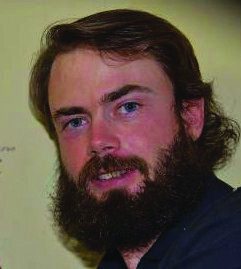The impact of concussions felt by the rodeo community
Posted on January 27, 2017 by Maple Creek
The rodeo community lost the talented Canadian bull rider Ty Pozzobon. Following numerous head injuries, it’s believed Pozzobon succumbed to post-concussion depression. He ended his life Jan. 9.
His death comes after many former hockey and football players experienced similar medical problems and left this world the same way. Pozzobon’s passing will raise awareness of the issue within rodeo circles and hopefully draw attention to the serious nature of head trauma.
Ultimately, all sports where brain injuries occur while have to wrestle with this problem. Hockey and football were the first and now it’s rodeo’s turn, but there are numerous other sports where the discussion hasn’t happened yet in a meaningful way.
To prevent further tragedies, many within the rodeo and medical community are calling for more protocol to guide riders back from injury. There are measures currently in place to assess concussions and determine if they’ve healed, but little in the way of tracking riders’ complete medical history or monitoring their return after previous brain injuries.
From a medical point of view, Pozzobon, who had suffered several concussions, was treated the same as competitors who only had one, even though his risk of reinjury was many times higher.
In a sport that is the epitome of toughness and where competing while injured is expected, even revered, Pozzobon’s suicide shows brain injuries aren’t like broken bones or torn muscles. Brain injuries can alter, sometimes violently, the way a patient thinks and feels.
A person becomes concussed in one of three ways, but only two can happen at a rodeo. The first is through an impact to the skull. Examples of this could be hitting your head against a chute or getting kicked. In these situations, the skull pushes against the brain causing injury.
However, it isn’t necessary to be struck in the head to get concussed. The second way a concussion could occur is if a person’s brain is jarred, shaken or sloshed against the inside of the skull. A sudden, abrupt stop such as being thrown to the ground or against the panels around the rodeo arena could be enough to trigger a brain injury.
The third way is caused by shock waves from an explosion, as experienced by soldiers.
No matter how a concussion occurs, any wound to such an important part of the body is always serious – no exceptions. You can get away with “grin and bear it” when it comes to bruised ribs or sore muscles, but never with an injured brain. Getting a second concussion before the first one heals can cause permanent impairment. In fact, some people never fully recover from a first concussion.
In simple terms, a concussion is a disruption to the brain’s wiring. Because the wires have been damaged, messages aren’t sent or get lost along the way.
This leads to confusion, memory loss, profound sadness, poor sleep, lack of energy, sensitivity to bright light or loud noise among many other difficulties.
In an article by the Globe and Mail, Pozzobon’s father said his son had sought medical advice from more than a dozen concussion doctors to help him recover from his numerous brain traumas.
One such violent injury came in 2013 when Pozzobon was riding Carolina Kicker. The bucking bull struck the cowboy with his hump and knocked him unconscious. While falling from the 2,000-pound animal, Pozzobon was head-butted by Carolina Kicker.
The following year, Pozzobon was stomped by Boot Strap, who snapped the cowboy’s helmet in two and knocked it off. As Pozzobon lay unconscious, Boot Strap trampled the 25-year-old’s jaw and further jarred his head and neck.
Although all riders born on or after Oct. 15, 1994 must wear a helmet, the reality is head gear does essentially nothing to protect the brain against sudden jarring such as when a rider gets bucked to the ground. Contrary to popular belief, helmets don’t prevent concussions. Rather, they protect the skull.
The solution to reducing concussions in rodeo won’t come from better equipment and it can’t come from rule changes. In hockey or football, players can be penalized for targeting their opponents’ head, but horses and bulls can’t. Since controlling the animals’ behaviour isn’t an option, this places more importance on protocol and making sure riders return to the rodeo only once they’re fully healed.
What will the long-term consequences be for the sport if more concussion protocols are implemented? Some careers will end suddenly. Brain injuries can take years to heal, which is a long time to be without a pay cheque. Many bull riders will retire. In the short-term, it can be a bitter pill to swallow to have a career terminated, but in the long-term riders will benefit from improved quality of life by reducing their likelihood of memory loss, bouts of rage, substance abuse, depression and suicide; all of which can be hallmarks of multiple concussions.


Leave a Reply
You must be logged in to post a comment.